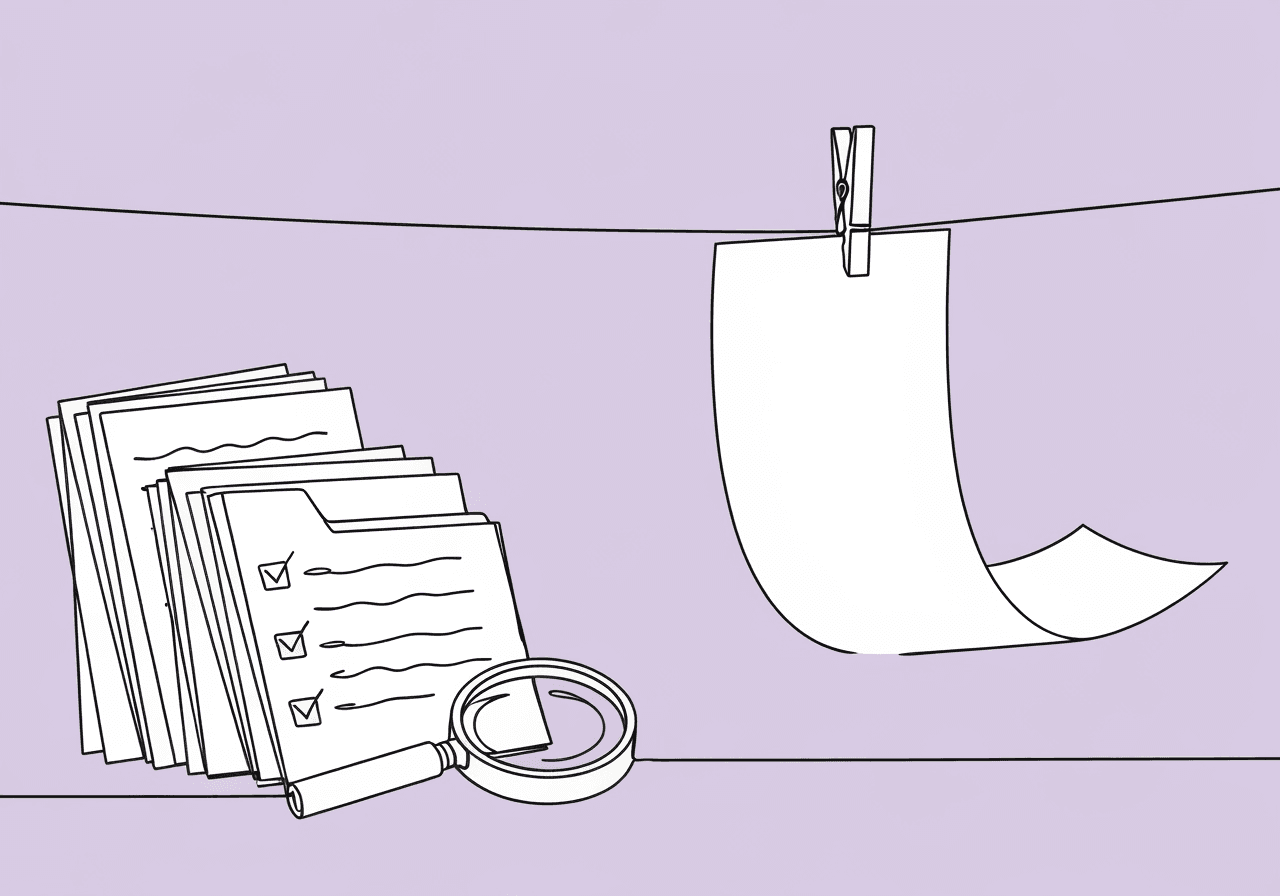ABA Progress Report vs LMN: Key Differences for BCBAs

Dealing with insurance in ABA therapy can be a real headache for BCBAs, especially when one small mistake might delay services for kids with autism. That's where the ABA progress report vs LMN comes in: these two documents play key, yet distinct, roles in proving ongoing need and securing funding. While progress reports highlight measurable gains to justify reauthorization, Letters of Medical Necessity (LMNs) establish the initial clinical rationale for treatment.
This comparison guide breaks it down for BCBAs, drawing from payer guidelines and best practices. You'll find an overview of each document's purpose and content, a side-by-side analysis of their differences, and actionable tips for compliance. By mastering these, you can streamline submissions and focus more on client outcomes.
Key Takeaways
- ABA progress reports track ongoing therapy success with data and visuals to support reauthorizations.
- LMNs justify starting treatment by linking diagnosis to medical necessity documentation.
- Both are vital for avoiding denials, but progress reports focus on updates while LMNs handle initials.
- Use graphs in reports and evidence-based rationale in LMNs to meet payer standards.
- Tailor each to your client's needs for smoother ABA reauthorization reports.
The Role and Requirements of ABA Progress Reports
ABA progress reports serve as the backbone of reauthorization requests. They demonstrate how therapy is working and why it must continue. According to Horizon Blue Cross Blue Shield guidelines (2023), these reports must be submitted at least two weeks before an authorization ends. Submit no more than 30 days prior to allow payers time for review.
They shift focus from initial justification to evidence of response to intervention. This helps BCBAs track client improvements and adjust plans. Key mandatory content includes client demographics, such as name, date of birth, and program history like start date and any treatment gaps.
Reassessments using validated tools—such as the Vineland Adaptive Behavior Scales or VB-MAPP—occur every 6 months to measure progress Aetna (2023). Detailed data per skill or behavior domain is essential. Include baseline levels, current status (e.g., met, in progress, or modified), and graphical representations of session-by-session trends aligned with mastery criteria.
For instance, reports should quantify overall progress, like the percentage of goals mastered. Address barriers such as session cancellations or illness. Parent training updates are crucial, outlining caregiver involvement and coordination with other providers.
Aetna's medical necessity guide (2023) emphasizes reevaluating interventions every six months to confirm ongoing need, including tapering plans if applicable Aetna (2023). This data-driven approach not only supports medical necessity but also informs ethical practice under the BACB Ethics Code.
Without graphs and interpretations, reports risk rejection, as payers demand visual proof of trends Horizon BCBS (2023). BCBAs should integrate these elements to show treatment fidelity and client-specific adjustments. Ensure reports are concise yet comprehensive.
Understanding the Letter of Medical Necessity (LMN) for ABA Therapy
The LMN is a foundational document that justifies ABA therapy as a covered, evidence-based intervention from the outset. Unlike progress reports, it targets initial authorizations or appeals. It persuades insurers that services meet medical necessity criteria.
Wellpoint's clinical guidelines (2023) describe it as essential for demonstrating how ABA addresses symptoms of diagnoses like autism spectrum disorder (ASD). Use ICD codes for clarity Wellpoint (2023).
Mandatory content starts with patient details—name, birth date, insurance number—and provider credentials. It must be signed by a qualified professional like a physician or psychologist, often with BCBA input. The diagnosis section must detail ASD or related conditions, including onset date and supporting evaluations.
Symptom severity and functional impacts follow. Explain how behaviors impair daily life, such as social deficits or safety risks, backed by assessments. The core is the evidence-based rationale, citing why ABA is appropriate over alternatives, with references to clinical studies or payer policies.
Include treatment specifics: recommended hours, duration, setting (e.g., home-based), and supervision by a BCBA. Expected outcomes, like skill acquisition and risks of denial (e.g., regression), round it out, along with attached records.
Aetna (2023) stresses including functional impairments to tie therapy directly to improved quality of life Aetna (2023). LMNs must be formal and concise, avoiding jargon while being persuasive.
Templates from sources like Blue ABA Therapy can streamline this. But customization per client is key to avoid generic rejections. For deeper dives on tying goals to necessity, check our guide to ABA goal documentation for BCBAs.
ABA Progress Report vs LMN: Key Differences at a Glance
Comparing an ABA progress report vs LMN reveals their complementary roles in the authorization lifecycle. Progress reports focus on ongoing efficacy, submitted periodically to renew funding. LMNs establish the "why" for starting or expanding services.
Audience differs too: LMNs go to insurers for prior approvals, often with medical leads. Progress reports support reauthorizations and involve multidisciplinary teams. Frequency varies—LMNs are typically one-time or for appeals, updated as needed (e.g., every 6-12 months for significant changes), per Aetna guidelines (2023).
Progress reports align with authorization cycles, often every 6 months. Purpose-wise, LMNs prove initial medical necessity through diagnosis and rationale. Progress reports supply proof of progress via data to sustain it.
Here's a side-by-side breakdown:
| Aspect | ABA Progress Report | Letter of Medical Necessity (LMN) |
|---|---|---|
| Primary Purpose | Show treatment response and justify continuation/reauthorization | Establish initial medical necessity and secure coverage/approval |
| Audience | Insurers, BCBAs, caregivers for reauthorization review | Insurers, physicians for prior authorization or appeals |
| Frequency | Every 6 months or per authorization end (e.g., 2-4 weeks prior) Horizon BCBS (2023) | Initial submission; updates for appeals or plan changes (every 6-12 months if needed) Aetna (2023) |
| Key Content | Progress data, graphs, goal status, barriers, parent training, reassessments | Diagnosis (ICD codes), symptoms/impacts, treatment plan, evidence-based rationale |
| Required Proof | Measurable progress (e.g., % goals met, trends) vs. stagnation Wellpoint (2023) | Functional impairments and why ABA is essential (no alternatives) |
| Length/Tone | Data-heavy, analytical (10-50 pages with visuals) | Persuasive, clinical (1-2 pages, formal) |
This table highlights how progress reports build on LMNs. The former requires ongoing data to validate the latter's claims. For initial setups, pair an LMN with a treatment plan; for renewals, lean on progress reports.
Explore more on avoiding denials in our masterclass on ABA medical necessity documentation.
Actionable Best Practices for BCBA Documentation Compliance
Crafting effective progress reports and LMNs demands precision to meet payer standards and BACB ethics. Start with digital tools like HIPAA-compliant platforms for data tracking. Your Missing Piece recommends voice-to-text for efficiency, reducing burnout while ensuring timely entries.
For progress reports, prioritize systematic collection: use frequency recording and graphs to visualize trends Cross River Therapy. Always tie content to medical necessity. In progress reports, quantify outcomes (e.g., "80% mastery in social skills") only if sourced from session data, and note adjustments like fading prompts.
For LMNs, reference evidence like CDC-endorsed ABA efficacy for ASD CDC (2023). Emphasize client-specific needs over generics. Collaborate early: involve caregivers in progress summaries and physicians for LMN signatures.
Compliance tips include checklists—submit progress reports 30 days early to buffer reviews—and appeals readiness. If denials occur, reference payer policies like Horizon BCBS (2023) for resubmissions. Train teams on BACB standards to avoid gaps Horizon BCBS (2023).
For reauthorization templates, see our guide to ABA progress reports. And for prior auth prep, try the BCBA initial authorization checklist.
Frequently Asked Questions
What are the key components of an ABA progress report?
An ABA progress report includes client demographics, program history, reassessment results using tools like VB-MAPP, detailed progress data per goal (baseline, status, graphs), overall summary, and barriers like treatment gaps. According to Horizon Blue Cross Blue Shield (2023), it must show response to intervention every 6 months, with parent training updates and justification for continued hours Horizon BCBS (2023).
How often should ABA progress reports be submitted for reauthorization?
Progress reports are typically due every 6 months or aligned with authorization periods, submitted 2-4 weeks before expiration but no more than 30 days prior. Aetna guidelines (2023) require reevaluation every six months to confirm medical necessity Aetna (2023).
What is the purpose of a Letter of Medical Necessity (LMN) for ABA therapy?
An LMN justifies ABA as a covered treatment by detailing diagnosis, symptoms, functional impacts, and evidence-based rationale for hours and setting. It's essential for initial approvals, signed by a qualified provider, and supports appeals per Wellpoint clinical criteria (2023) Wellpoint (2023).
How do ABA progress reports differ from LMNs in content and focus?
Progress reports emphasize ongoing data, graphs, and goal mastery to prove efficacy, while LMNs focus on initial diagnosis, symptom severity, and treatment rationale without progress metrics. The former tracks adjustments; the latter establishes need Aetna (2023).
What common barriers should be documented in ABA progress reports?
Barriers like session cancellations, illness, or environmental factors must be noted with impacts on progress and mitigation plans. Horizon BCBS (2023) requires this to explain trends and support continued necessity Horizon BCBS (2023).
Can an LMN be used alongside progress reports for reauthorizations?
Yes, LMNs provide baseline necessity, while progress reports update it with data for renewals. Combining them strengthens submissions, as recommended by payer policies like Aetna (2023) Aetna (2023).
Mastering ABA progress report vs LMN documentation empowers BCBAs to advocate effectively for clients, reducing administrative hurdles and denials. From initial LMNs grounding therapy in clinical need to progress reports proving its value through data, these tools align with payer expectations like those from Aetna and Horizon BCBS. The result? Smoother authorizations and more time for meaningful interventions.
Next steps: Audit your last submission against a checklist from sources like the BACB Ethics Code. Collaborate with physicians for LMN refinements, and schedule reassessments quarterly to feed robust progress reports. Integrate tools from Praxis Notes for streamlined templates—start with our reauthorization guide today to boost compliance and client outcomes.
Popular in Compliance & HIPAA
- 1
ABA Documentation Checklist: RBT Compliance Guide 2025
1,2719 min read - 2
BCBA Procedural Fidelity Checklist: Essential H-6 Guide
1,2706 min read - 3
RBT Renewal Competency Documentation Guide for BCBAs
1,2136 min read - 4
BCBA Service Discontinuation Ethics: BACB Guide
7836 min read - 5
BCBA Ethical Documentation Best Practices
6716 min read
Popular in Compliance & HIPAA
- 1
ABA Documentation Checklist: RBT Compliance Guide 2025
1,2719 min read - 2
BCBA Procedural Fidelity Checklist: Essential H-6 Guide
1,2706 min read - 3
RBT Renewal Competency Documentation Guide for BCBAs
1,2136 min read - 4
BCBA Service Discontinuation Ethics: BACB Guide
7836 min read - 5
BCBA Ethical Documentation Best Practices
6716 min read
Related Resources
Explore more helpful content on similar topics

ABA Documentation Audit Fails: 7 Pitfalls to Avoid
Avoid common ABA documentation audit fails that trigger insurance denials. Discover BCBA audit preparation strategies: clear, measurable notes, supervision logs, and accurate coding for audit-proof compliance.

ABA Service Fading Documentation Guide for BCBAs
Learn to master ABA service fading documentation for ethically justifying reduced ABA hours. Discover data-driven steps, ensure LMN compliance, and address parental concerns with expert tips.

Master BCBA Skill Maintenance Documentation for Compliance
Struggling with BCBA skill maintenance documentation? Discover four key data points, including generalization probe data, and strategies for ABA justification for maintenance. Ensure ethical compliance and insurance success today.